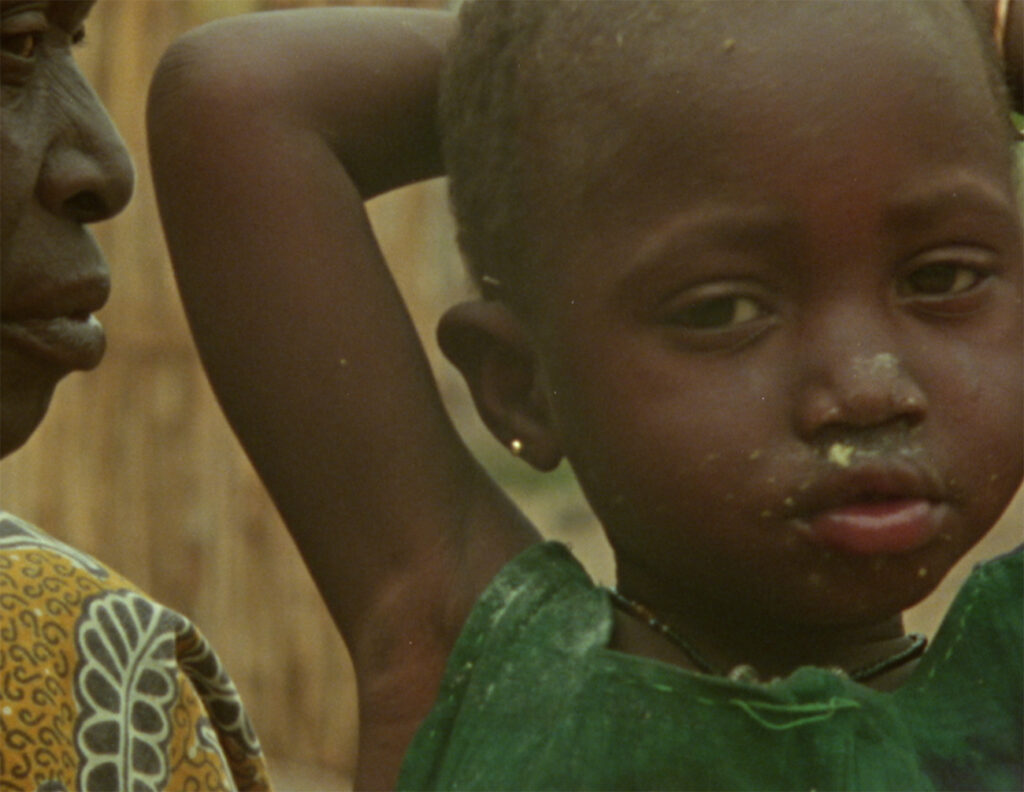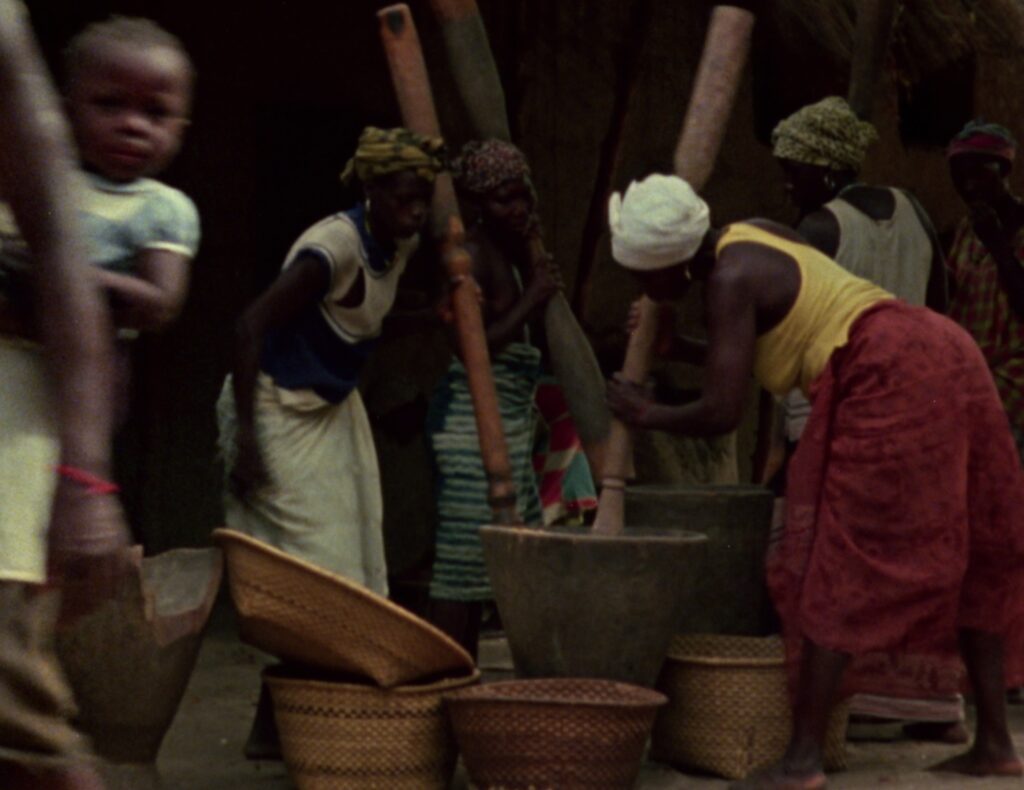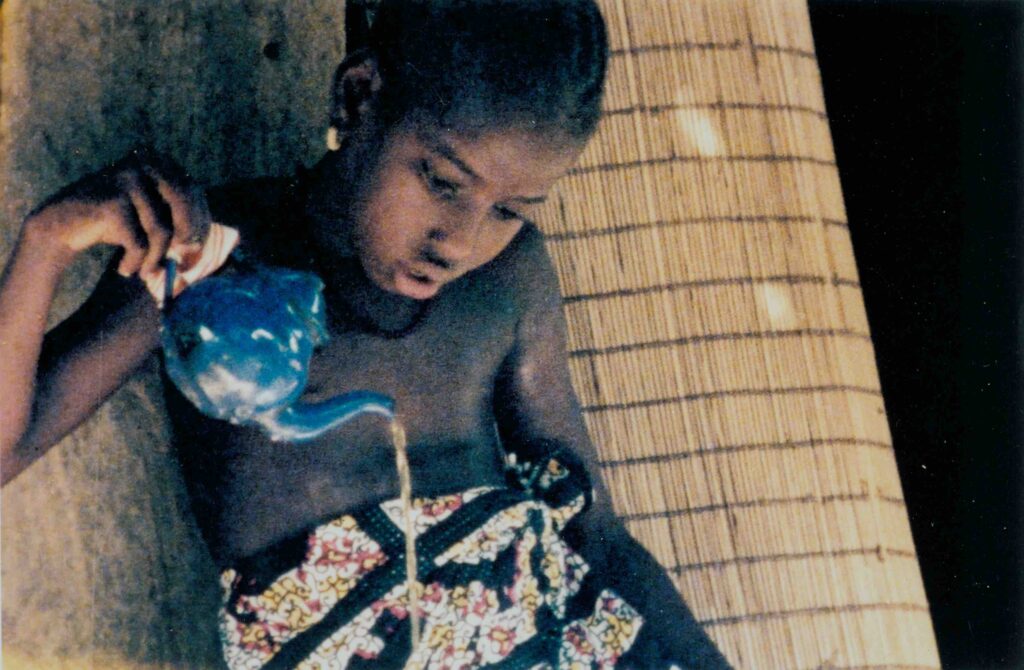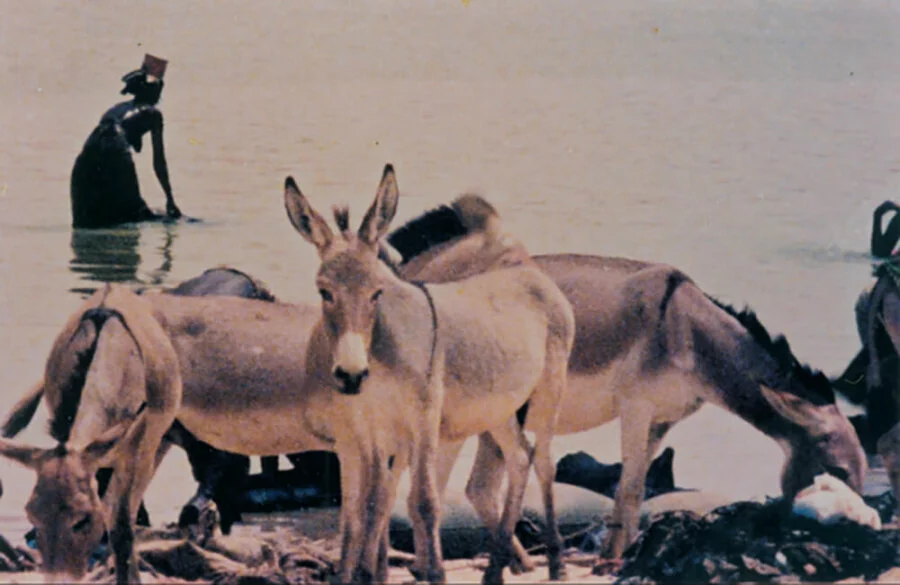By Alessia D’Introno
The work of filmmaker Trinh T. Minh-ha, through her iconic film Reassemblage, challenges the conventions of visual anthropology and documentary filmmaking by criticizing the colonial representations imposed on Africa. With a post-colonial and intersectional approach, she ushered in significant changes to the dominant narrative toward the end of the 20th century.
The image is the most trusted sceptre for a European scholar. Through the eye, the mind translates nature into image for the ultimate purpose of understanding, but this understanding is a cultural one and can change according to one’s own symbolism. First with maps to orient themselves and drawings, in the early 20th century the visual anthropologist tried out new tools to document field trips: photography. This arrived as a support to the logbook, deepening the research upon return home. The eye of the European expert, however, can only produce a European vision. Indeed, it is through photography and non-contextualised video footage that the scholar fuels prejudices about the African continent. His claim was to speak of an object or subject with the aim of cataloguing them. Not so far from the theory of the anthropologist Edward Tylor – one of the so-called armchair anthropologists – who coined the comparative evolutionist method in 1889, downgrading the cultures of the Global South to a lower rank. This is a classification of human beings according to their degree of evolution: from the civilised of Western peoples, to the barbarity of Asian peoples and to the wilderness of African peoples .
The climate of supremacy established by the civilised, as well as the projection of one’s own insecurities onto the other, fuelled the colonial invention of the primitive, a derogatory term capable of producing the spectacularisation and simplistic view of sub-Saharan history. But as Valentin-Yves Mudimbe has reiterated, they speak neither of Africa nor of Africans but rather justify the process of inventing and conquering the continent, describing its primitiveness, its disorder, and, consequently, the means of its exploitation and the methods for its ‘regeneration1. The European leans towards cultural purity rather than its otherness. It is a matter, as Remotti takes from Platone, of separating the worst from the best. Identity is constructed and formed on separation or assimilation. Through a ‘cleansing’ of the other, through the renunciation of multiplicities, particularity is formed2. This can, however, both increase coherence and reinforce ideals of discrimination of superiority. Purification, which is itself a concept that is created, can thus take the form of cultural correction or elimination of the other, here leading to genocide or ethnocide. It is the view of the Primitive as inferior that leaves the coloniser with an excuse to give vent to his outbursts. The coloniser, in order to ease his conscience, gets into the habit of seeing the other man as an animal, accustoms himself to treating him like an animal, and tends objectively to transform himself into an animal3. Fanon said as early as the 1950s that the civilised white man retained a certain irrational nostalgia for eras of sexual licence, projecting his instincts onto the colonised man and behaving ‘as if’ the black man actually had these licences.
Visual anthropology today has changed its paradigms. It stands out ethically and questions itself through critical thinking. On the other hand, anti-colonial theory, post-colonial literature and cinematography were born, all of which demonstrate and make known the different cultural complexities. The foundations laid by the theoretical work of psychiatrist Frantz Fanon, such as self-representation and the creation of models for child education will be the foundation for an all-black cinema. Its strength lies in dispelling the belief in authenticity. Authenticity is often spoken of, in fact, but it is an explanation that serves more for the other. When claimed for itself, it could be a way of internalising dominant values, in Fanon’s concept of assimilation. You can only be authentic if you confine yourself to locking doors and putting up fences4. This is how filmmaker Trinh T. Minh-ha talks about Reassemblage, an anti-ethnographic and anti-documentary film shot in Senegal in 1982. The film aims to retract these conventions and representations and encourages the ambiguity of colonial ethnographic footage. The assumptions are do not intend to speak about; just speak near.

The film attempts the destruction of universalised paradigms and languages through the deconstruction of past ideologies. The watched can claim its own identity and eliminate its exoticisation. Through anti-ethnography, the filmmaker introduces intersectional ideology: there are no categories, but gender, ethnicity and class are mixed together. A mode that challenges objectification through the intermediate, the hybrid, the liminal. This is why his voice is reflexive, always questioning and opposed to documentary authority. The voice-over is poetic. It lets out reflections and images by suggesting sounds and silences and through these it admits a certain fiction of its own in the form of filming. I wrote ‘there is no such thing as documentary’ because it’s illusory to take the real and reality for granted and to think that a neutral language exists, even though we often strive for such neutrality in our scholarly work. To use an image is to enter fiction5. Speaking of an objective reality is not the strategy of Minh-ha, whose voice lulls the montage, encouraging multiple glances and criticality in the viewer. She does not set out to demonstrate the reality of an entire culture, but looks at a small village in Senegal where she scrutinises the stereotype imposed on women and breaks it down through dialogue, confrontation and sharing, experienced in the three years prior to filming. She writes of these years that learning and teaching was then a single process: as I taught music composition, harmony, and music appreciation, I was also learning another music-the African way of life through my students and the people I met there. We came from different walks of life, and just sitting together to talk about all and nothing was most inspiring. We were writers (literary and political writers), searchers, raconteurs, and performers. But rather than showing command and mastery of what we knew, we wanted to . . . not to get rid of, but let’s say free ourselves of, too much luggage.

In Reassamblage, women are culturally responsible for the fire that can unite but also destroy. It is an all-female power that merges with the body, the real protagonist for Minh-ha. One sees a body fragmented into details. The camera is attentive to the rituals of labour such as the gesture of weaving and the traditional attention to the crushing of grain. These gestures, filmed before as disconnected, are recomposed in a communal vision during shared work processes or during dances. The everydayness of community gestures and expressions are key for the filmmaker, who becomes less and less authoritarian. Her language is not scientific-anthropological: it disengages from the concept, thus opening up to subjective interpretations.

Art could be the force that enables change and keeps history alive, while the poetics of the creative everyday could be both a dimension of political consciousness and a transformative mode of history6 – the everyday as a pure element of transformation. In his theoretical and filmic practice, Trinh T. Minh-ha often works with the figure of the inadequate, the stranger, the refugee and the rejected. His principle is to challenge Western authenticity. She questions, clashes against objective flatness and challenges established conceptions as universals. She does not only address the figure of the anthropologist, but reckons with the missionary, the tourist and the common viewer, above all she reckons with herself as a woman and as a former colonised woman. To what extent have I assimilated the means of the master? How can I use those tools to deconstruct knowledge? The film is an invitation to question what we think we know and what we assimilate as true. What are our expectations before we even play a film about Africa?
Trinh T. Minh-ha is a feminist writer, filmmaker, post-colonial theorist and music composer. Born in Hanoi, Vietnam, she taught for three years in Dakar and is currently teaching Gender & Women’s Studies and Rhetoric at the University of California, Berkeley. Her work aims to challenge stereotypical representations of women within the media. Her cinematic approach has shaped a new aesthetic and narrative. She conceptualised the path of multiplicity as a political action and as a tool of resistance. Her feature films include Reassemblage 1982, Naked Spaces 1985, Surname Viet Given Name Nam 1989, Shoot for the Contents 1991, A Tale of Love 1996, The Fourth Dimension 2001 and Night Passage 2004.
- Valentin-Yves Mudimbe, The Invention of Africa, 1988 ↩︎
- Francesco Remotti, Contro l’identità, 1996 ↩︎
- Aimé Césaire, Discorso sul Colonialismo, 1955 ↩︎
- Frieze, ‘There is No Such Thing as Documentary’: An Interview with Trinh T. Minh-ha ↩︎
- Ibidem ↩︎
- Feminist, Art Coalition. Trinh T. Minh-ha, Notes on Feminisms ↩︎
Traslation by Luigina D’Introno
Alessia D’Introno has a Master’s Degree in Visual arts and Curatorial Studies, NABA, Milan. She has written several articles in Juliet Art Magazine and Artslife.
Her critical work focuses on the demolition of historical paradigms to which Italy and Europe have been linked for centuries. The de-colonial practice of her research develops a confrontation and openness to new curatorial methodologies and possibilities.

